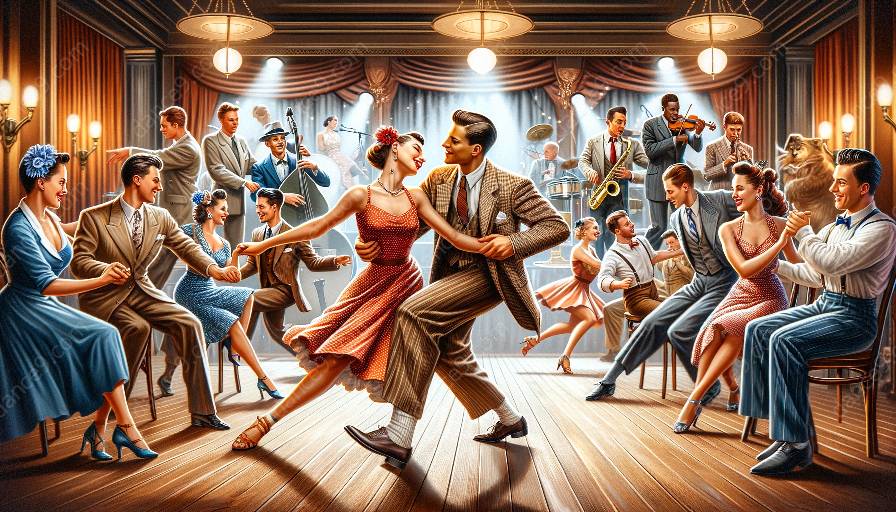Swing dance is a vibrant and diverse form of social dance that originated in the 1920s and continues to captivate dancers and audiences around the world. The term 'swing dance' encompasses a wide range of styles, each with its own unique characteristics, history, and cultural influences. Whether you're a newcomer to the world of dance or a seasoned pro, exploring the different styles of swing dance can open up a world of rhythmic expression and connection.
Lindy Hop
The Lindy Hop is perhaps the most well-known and iconic style of swing dance. It originated in Harlem, New York City, in the late 1920s and early 1930s, drawing inspiration from various dance forms, including the Charleston and jazz. The Lindy Hop is characterized by its energetic and improvisational nature, featuring a mix of 6- and 8-count patterns, aerials, and exuberant movements. Its infectious rhythm and joyful spirit make it a favorite among dancers of all ages.
Charleston
The Charleston, with its roots in African-American dance traditions, rose to popularity during the 1920s. This lively and spirited dance style can be performed solo, with a partner, or in groups, and it often features playful and high-energy movements, including the iconic 'Charleston kick.' From the fast-paced '1920s Charleston' to the more relaxed '30s Charleston,' this style offers a delightful glimpse into the exuberant dance culture of the Jazz Age.
Balboa
Originating in Southern California during the 1920s and 1930s, Balboa is known for its smooth, close embrace and intricate footwork. Unlike the Lindy Hop, which emphasizes energetic movement and momentum, Balboa is characterized by its subtle and intricate footwork, making it a popular choice for dancers in crowded ballrooms. The close connection between partners and the skillful execution of intricate footwork make Balboa a captivating and elegant style of swing dance.
East Coast Swing
East Coast Swing emerged during the 1940s and is often associated with big band and swing music. This versatile style incorporates a mix of 6-count and 8-count patterns, offering dancers the freedom to express their personalities and musicality. Whether dancing at a lively social event or a formal ballroom setting, East Coast Swing's joyful and energetic movements make it a cherished style among swing dance enthusiasts.
West Coast Swing
With its roots in California's dance halls and evolving music styles, West Coast Swing is a sophisticated and improvisational form of swing dance. Known for its smooth, linear movements and focus on connection, this style has gained popularity for its adaptability to a wide range of musical genres, from blues to contemporary pop. Its emphasis on partner connection and intricate lead-follow techniques make West Coast Swing a favorite among dancers seeking a dynamic and expressive social dance experience.
Learning the different styles of swing dance offers a rich tapestry of rhythmic expression, connection, and cultural appreciation. Each style invites dancers to explore the nuances of movement, musicality, and historical context, providing a window into the vibrant heritage of swing dance. Whether you're drawn to the infectious energy of the Lindy Hop, the playful exuberance of the Charleston, or the graceful elegance of Balboa, there's a style of swing dance waiting to inspire your spirit and ignite your passion for dance.
If you're eager to delve into the world of swing dance, consider joining dance classes that specialize in teaching these dynamic styles. From introductory classes for beginners to advanced workshops for experienced dancers, the joy of swing dance awaits you. Immerse yourself in the rhythmic pulse of swing music, connect with fellow dancers, and discover the exhilarating artistry of swing dance in all its forms. Let's dance our way through the history, diversity, and pure joy of swing dance together!













































































